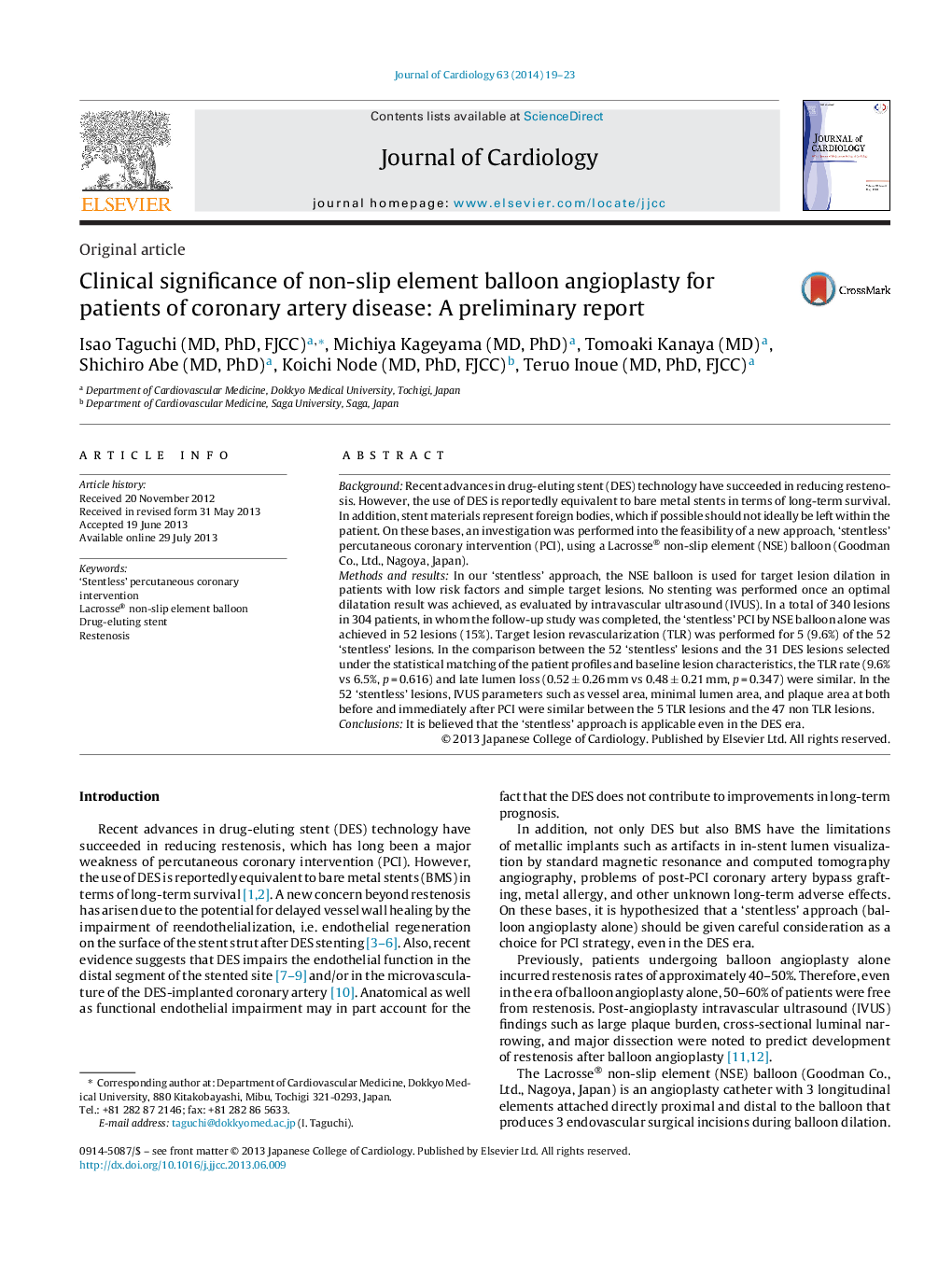| Article ID | Journal | Published Year | Pages | File Type |
|---|---|---|---|---|
| 5984288 | Journal of Cardiology | 2014 | 5 Pages |
BackgroundRecent advances in drug-eluting stent (DES) technology have succeeded in reducing restenosis. However, the use of DES is reportedly equivalent to bare metal stents in terms of long-term survival. In addition, stent materials represent foreign bodies, which if possible should not ideally be left within the patient. On these bases, an investigation was performed into the feasibility of a new approach, 'stentless' percutaneous coronary intervention (PCI), using a Lacrosse® non-slip element (NSE) balloon (Goodman Co., Ltd., Nagoya, Japan).Methods and resultsIn our 'stentless' approach, the NSE balloon is used for target lesion dilation in patients with low risk factors and simple target lesions. No stenting was performed once an optimal dilatation result was achieved, as evaluated by intravascular ultrasound (IVUS). In a total of 340 lesions in 304 patients, in whom the follow-up study was completed, the 'stentless' PCI by NSE balloon alone was achieved in 52 lesions (15%). Target lesion revascularization (TLR) was performed for 5 (9.6%) of the 52 'stentless' lesions. In the comparison between the 52 'stentless' lesions and the 31 DES lesions selected under the statistical matching of the patient profiles and baseline lesion characteristics, the TLR rate (9.6% vs 6.5%, p = 0.616) and late lumen loss (0.52 ± 0.26 mm vs 0.48 ± 0.21 mm, p = 0.347) were similar. In the 52 'stentless' lesions, IVUS parameters such as vessel area, minimal lumen area, and plaque area at both before and immediately after PCI were similar between the 5 TLR lesions and the 47 non TLR lesions.ConclusionsIt is believed that the 'stentless' approach is applicable even in the DES era.
